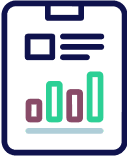ARTICLE
7 Key Questions About Churn Every SaaS Marketer Should Answer

In the dynamic world of Software as a Service (SaaS), understanding and managing churn effectively is the key to long-term success and growth. Churn, or the customer turnover rate by which customers cancel their subscription of a service, has a direct impact on a company’s bottom line and health. For a SaaS marketer, understanding churn means not just understanding its reasons but also taking steps to mitigate its effect.
Below are some key questions that every SaaS marketer must be able to answer about churn:
1. What is our churn rate currently, and how does it measure up against industry benchmarks?
Understanding your churn rate is the solution to the problem. Churn rate can typically be measured as a percentage of the subscribers unsubscribing over a specific period, i.e., month or year.
By monitoring and comparing your churn rate on a regular basis to the industry average, you’ll have an idea of where to make some changes and establish appropriate goals to reduce churn. For example, if your churn rate is higher than the industry average, then most probably your price model, customer support, or product is not appropriate and needs to be changed.
2. Why are we losing customers primarily, and how do we correct that?
Diving into the cause of customer churn is critical to coming up with effective strategies to reduce churn. Why are the customers churning? Do they not like the product, bad customer service, prices, or something else?
Customer surveys, support tickets, and feedback from customer success and sales teams alike can all give you rich data on the underlying causes of churn. By knowing your most critical causes of churn, you can begin to set targeted programs in place to solve these issues and successfully retain customers.
3. Are we onboarding new customers successfully to reduce early churn?
A strong onboarding process is essential for laying the foundation for a good customer journey. That initial impression of the consumer towards your product has a lot of way in determining the destiny of churn for him.
Make sure to provide support, training, and instructions to new customers so that they can use in an attempt to gain value from your product in a timely manner. Churn rate and the decline in customer satisfaction are attainable with open communication, one-on-one onboarding, and learning content.
4. How are we engaging with at-risk customers to prevent churn?
The most effective way to limit churn is the use of at-risk customer identification and contact processes. Use data analysis and predictive modeling to identify churn indicators such as declining usage or activity level.
Engage in targeted outreach initiatives, tailored interventions, and forceful interventions to resolve customer grievances and re-engage at-risk accounts. By taking proactive action with customers showing symptoms of disengagement or dissatisfaction, you are able to prevent churn from occurring and render the customer more loyal.
5. Are we continually improving and developing our product on the basis of customer feedback?
Customer feedback and repeated iteration on your product is the key to staying competitive and avoiding churn. Regularly ask for feedback through surveying, user testing, and interviewing customers. Feedback should be used as a way of uncovering areas to improve, determining feature priorities, and improving overall customer experience.
By incorporating customer feedback into your product design, you can make your product worthy of your evolving customers’ needs, and you will stay competitive as an enterprise.
6. How do we build customer loyalty and advocacy to reduce churn?
Creating close relationships with your customers will prevent them from churning as well as winning long-term loyalty. Leverage customer loyalty programs, reward programs, and advocacy programs for retention as well as to encourage customers to become brand ambassadors.
Create a customer-centric culture in your organization, focusing on customer success and satisfaction. By delivering more thoughtful customer experience and building strong relationships with your customers, you will be achieving greater retention and preventing churn in the long run.
7. Are we monitoring and measuring the success of our churn prevention initiatives?
It is essential to have defined key performance indicators (KPIs) and metrics to assess the success of your work against churn to be able to quantify success and know where to make improvements. Measure the success of your project quantitatively by tracking metrics such as customer lifetime value (CLV), retention rate, and net promoter score (NPS). Use the insights to optimize your strategy and develop your strategy to fight against churn further.
By constantly monitoring and analyzing the impact of your churn reduction strategies, you can make informed decisions that lead to business growth and long-term success.
In short, master churn requires an integrated understanding of customer behavior, progressive engagement strategies, and continuous improvement. By answering these significant questions and implementing effective churn reduction strategies, SaaS marketers can decrease churn, enhance customer retention, and ultimately drive sustainable growth for their companies. Furthermore, by utilizing Customer Relationship Management (CRM) software tools like Churn Solution, there can be valuable insights and applications to further optimize churn management activities.
- 1. What is our churn rate currently, and how does it measure up against industry benchmarks?
- 2. Why are we losing customers primarily, and how do we correct that?
- 3. Are we onboarding new customers successfully to reduce early churn?
- 4. How are we engaging with at-risk customers to prevent churn?
- 5. Are we continually improving and developing our product on the basis of customer feedback?
- 6. How do we build customer loyalty and advocacy to reduce churn?
- 7. Are we monitoring and measuring the success of our churn prevention initiatives?
















